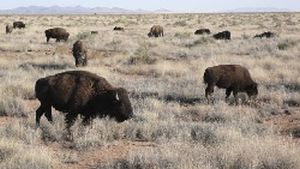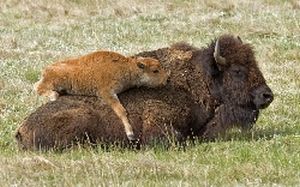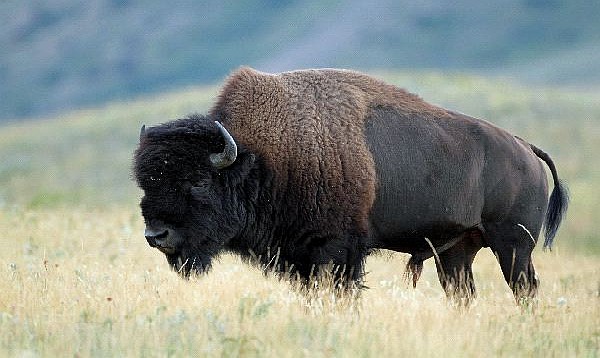Janos, Mexico — The surprise isn’t so much that a herd of wild bison from South Dakota roams the prairie here but that the great beasts look as if they never left, placidly grazing on the yellow grasslands.
Tall and mighty, the bison, also known as buffalo, once roamed North America by the millions. Now they’re back in this state of Chihuahua, which borders Texas, as part of an effort by the US and Mexican governments and the Nature Conservancy - aimed at restoring the magnificent animals to lands from which they were hunted to near-extinction in the 1800s.
"They bring back memories of better days, of open skies and beautiful prairie lands," said local rancher Ángel Martínez, 67, describing the Janos area when he was a boy. "Magnificent, aren’t they? All standing among us like they belong here as much as we do. I never imagined I’d see this again."
Mexico is replete with beauty, from its endless miles of beaches to the vast Chihuahuan desert with its mountains upon mountains. Over the past few years, particularly under former President Felipe Calderón, Mexico made strides in raising awareness of protecting its natural resources, ecological experts say, something they hope continues under the new administration of Enrique Peña Nieto.
"We believe the new administration will be able to acknowledge the good and valuable steps that we have made as a nation, specifically on our international conservation commitments, policies, and environmental regulations, and take it from there," said Rosario Álvarez, director of the Nature Conservancy’s Mexico and Northern Central America Program. "We all need to work together to secure our natural capital for the sake of all forms of life and the future generations of Mexicans."
 |
In a country in the throes of transformation, both political and economic, the bison are the latest sign of a burgeoning conservation movement. In this area, citizens ranging from ranchers to students are learning the importance of conservation, not just to preserve the splendor of the region, but also to protect the land against recurrent droughts and threats such as overgrazing.
Last year, Chihuahua and other regions of Mexico endured the worst drought in 71 years, hurting agriculture so badly that some farmers, including Mennonites, are considering abandoning their territories because of water and land shortages.
Here in Janos, some three hours from the Texas border, José Luís García Loya runs Rancho Uno, encompassing 46,000 acres, part of the ambitious plan by the Nature Conservancy to restore grasslands. Calderón declared the 1.3 million acres surrounding Rancho El Uno a federally protected area and named it the Janos Biosphere Reserve.
Three years ago, the first bison — 23 of them — were trucked in an 18-wheeler from South Dakota, where, as in Missouri and Iowa, the Nature Conservancy has wild herds. When they arrived, García Loya invited the town to celebrate, but some turned out with doubts, including rancher Manuel Yañez.
"At first we questioned why those crazy people brought the bison back," said Yañez, laughing. "Then we realized the joke was on us. We lacked any kind of long-term vision."
They have started to see results. Yañez and his father-in-law, Martínez, joined a group of ranchers who adopted sustainable grazing practices. The men now raise smaller herds, which means a more profitable business, they said, because with the pasture recovered, they no longer have to truck in alfalfa — which was expensive during the drought.
 |
"If we don’t have agriculture, we don’t have cattle," Yañez said. "We can’t leave everything up to God. We have to do our part to prevent drought because in the end, our actions had made the bad years worse."
The efforts didn’t stop with ranchers. Across Mexico, environmental education has become mandatory in the curriculum of elementary and secondary schools, Álvarez said. Here in the Janos community, students started their own ecological clubs after a field trip to see the bison, whose numbers have expanded to 31. The students were mesmerized.
The bison were "something you don’t see every day," said Jessica García, 14, a student who belongs to one of the clubs. "It’s very cool. They were once killed for fun. Now we know how important they are to our region, so it’s up to us to protect them."
Some afternoons after school, students go house to house in this rural community to inform residents of the importance of things like recycling and not littering on streets or in the vast desert. "I think people are more ashamed about littering the area," said Briseida Rojo, 14. "I don’t see as much trash in the streets as before."
As the sun set over the Chihuahua mountains, the burly bison formed a circle around a group of visitors, causing momentary panic. "No worries," García Loya said. "They seem calm around me. They seem to know me."


